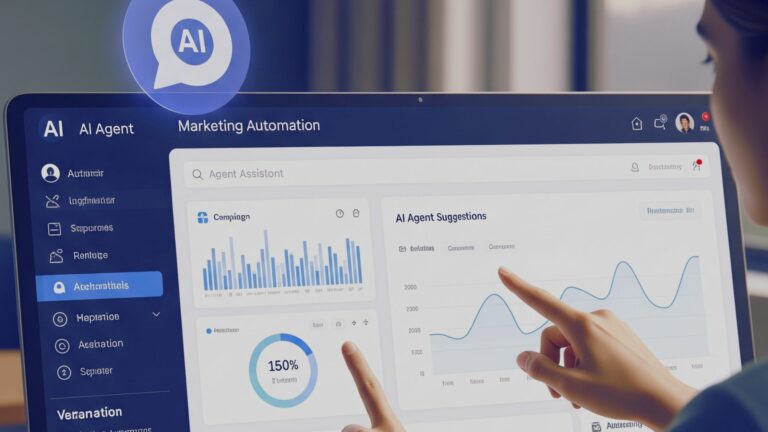In manufacturing, the most valuable competitive edge isn’t just operational speed or cost efficiency—it’s the ability to anticipate market demand before it fully materializes.
When customer preferences shift unexpectedly, factories operating on traditional reactive models face significant challenges. They either overproduce products with declining demand or underproduce items experiencing sudden popularity—missing critical revenue opportunities while generating costly waste.
Consider this scenario:
Your manufacturing facility begins adjusting production schedules based on real-time changes in marketing campaign engagement, IoT device performance analytics, and customer search behaviour patterns—all before any formal purchase orders are received. This approach is no longer theoretical. With strategic implementation of integrated systems, manufacturers can enable predictive production capabilities, where the factory intelligently senses emerging demand patterns ahead of traditional ordering cycles—eliminating the reactive delays that cost market share.
The Problem with Guesswork in Manufacturing
Traditional demand forecasting relies predominantly on historical sales data and static predictive models. However, today’s customers exhibit fundamentally different buying behaviours. Their purchasing decisions are influenced by dynamic, real-time factors including social media trends, economic fluctuations, competitor product launches, and service experience quality.
When your production planning cycle fails to incorporate these live market signals, your manufacturing strategy consistently lags behind actual market conditions.
This systematic delay results in:
• Inventory imbalances—both overstock and stockout scenarios
• Extended lead times that frustrate customers
• Escalated operational costs from inefficient resource allocation
• Deteriorating customer satisfaction due to availability issues
Predictive manufacturing provides a more intelligent approach—one that prioritizes speed, customer-centricity, and data-driven decision making.
Read: If you’re interested in how advanced forecasting methodologies are already transforming production planning, read our blog on [What If Forecasting Was Never Wrong?]
Reimagining Manufacturing Around the Customer with Salesforce
In the current era of hyper-personalization and real-time demand volatility, manufacturing facilities must evolve into customer-aware production systems. This transformation begins by eliminating the traditional barrier between consumer behavior insights and production execution strategies.
The Customer Signal Layer: Marketing Cloud
The intelligence gathering process initiates at the first customer touchpoint. Salesforce Marketing Cloud systematically collects and analyzes diverse behavioral data streams:
• Website navigation patterns and content consumption history
• Email campaign engagement metrics and response rates
• Marketing campaign interaction data across channels
• Social media sentiment analysis and brand perception tracking
When a regional marketing campaign experiences significant engagement increases for specific product variants, that behavioural data transcends traditional departmental silos. It becomes actionable demand intelligence that informs the entire manufacturing value chain.
The Intelligence Layer: Salesforce Data Cloud
Salesforce Data Cloud serves as the analytical hub that synthesizes insights across all customer touchpoints:
• Marketing engagement behavioural patterns
• Sales pipeline progression and conversion indicators
•IoT sensor performance data from deployed product installations
• Service Cloud case volume trends and resolution patterns
By creating a unified customer and asset intelligence graph, Data Cloud enables sophisticated predictive models that forecast not only demand volume but also product preference variations, geographic distribution requirements, and delivery urgency levels.
Curious how unified data strategies help streamline manufacturing operations? Explore [What If Factory Data Revealed What Matters?]
The Execution Layer: Manufacturing Cloud
This is where customer insights translate directly into production action. Salesforce Manufacturing Cloud converts upstream demand signals into:
• Sales agreements aligned with actual consumption forecasts
• Production planning optimized by region, SKU, and delivery timeline
• Continuous synchronization between sales teams and plant operations
Combined with real-time supply partner visibility and account-based forecasting capabilities, the manufacturing facility transforms from reactive to proactive operational mode.
We have explored this transformation in our earlier post on [What If Manufacturing Had No Limits?]
The Decision-Making Layer: Agentforce
This integrated ecosystem operates through Agentforce—an intelligent network of specialized, modular agents that:
• Continuously monitor customer engagement trend patterns
• Detect statistical anomalies in product interest levels
• Generate production adjustment recommendations before demand spikes occur
• Automate scenario modeling and cross-functional coordination processes
What If You Could Act on Interest Before It Becomes an Order?
Consider this practical scenario: a potential customer searches for a new industrial-grade air compressor on your website.
They thoroughly review product specifications and technical documentation, then navigate away without completing a purchase.
Several days later, they contact your service team to inquire about warranty coverage for a similar older model they currently operate.
Subsequently, they access a distributor portal to browse inventory but still don’t place an order.
Most manufacturing operations would remain completely unaware of these subtle interaction patterns.
However, with predictive manufacturing intelligence, each individual action represents a valuable signal—clear evidence that purchase intent is developing progressively.
Now consider if your manufacturing facility could:
• Automatically correlate all these behavioural signals
• Dynamically update demand forecasts for that specific product line
• Proactively prepare production teams for anticipated order volume
eliminating response delays when the order eventually materializes.
This represents how intelligent, customer-driven manufacturing facilities operate today.
They don’t wait for orders.
They detect emerging demand patterns before they convert to sales and maintain production readiness for rapid response.
You can also explore how integrated planning methodologies help in our blog on [What If Supply Chain Disruptions Never Surprised You Again?]
The Future of Manufacturing is Predictive, Not Reactive
Predictive manufacturing isn’t a theoretical future concept—it’s actively transforming production today, driven by advances in data analytics, artificial intelligence, and digital twin technologies. Industry research and performance data consistently demonstrate that manufacturers integrating real-time intelligence into planning processes achieve:
• Faster response to shifting demand by identifying early signals across marketing, sales, and service touchpoints
• Reduced unplanned downtime and inventory imbalances through proactive planning models • Improved delivery accuracy and customer satisfaction via tighter integration between customer signals and factory operations
From Insight to Action: Turning Signals Into Smarter Production
Modern manufacturers don’t need additional data volume—they need the operational capability to act on the right signals at the optimal time. That’s where sustainable competitive advantage is created.
Understanding that customers are interested in a product is valuable. Automatically triggering production adjustments, supply chain priority changes, and internal team alignment—all before orders are placed—creates measurable business impact.
This is where integrated technology ecosystems like Marketing Cloud, Data Cloud, Manufacturing Cloud, and intelligent orchestration through Agentforce deliver maximum value. However, the competitive advantage isn’t in the platforms themselves—it’s in how organizations connect them, customize them for specific requirements, and deploy them to solve industry-specific operational challenges.
At Cloud Odyssey, we specialize in helping manufacturers accomplish exactly this transformation. Not merely through technology deployment, but by helping teams bridge the operational gap between customer signals and factory response—converting insights into action with greater speed and precision.
Final Thought
In a market environment where consumer behavior shifts continuously, manufacturers that anticipate customer needs and respond in real-time will define the future of industrial production. With the right intelligence infrastructure, your factory won’t just manufacture what currently sells. It will produce what customers are about to want.










